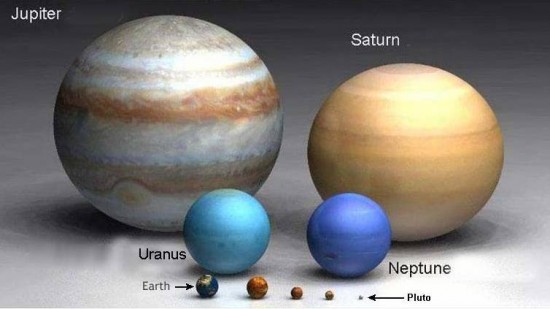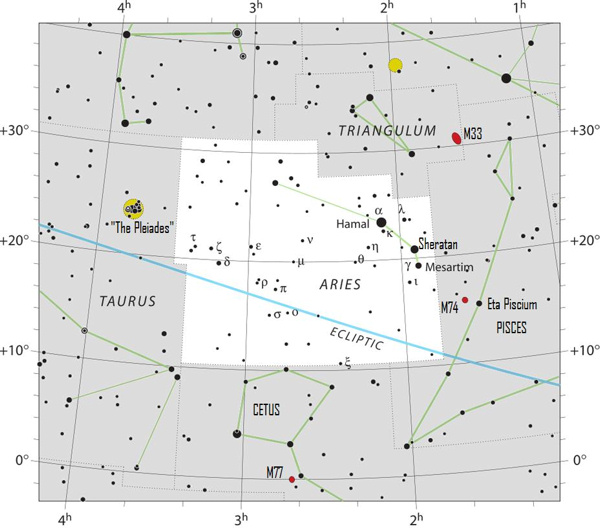Unless you’re a night owl, you’re not likely to see the moon and the planet Uranus before your bedtime in late July 2019. They’ll come up in the east more or less together around the midnight hour, and then will climb upward during the early morning dark hours. Visit the Sunrise Sunset Calendars site to know when dawn’s first light comes to your sky, remembering to check the box for astronomical twilight. The moon and Uranus soar highest up for the night just before dawn’s first light.
So the dark hour before dawn finds Uranus highest in the sky and easiest to spot in late July 2019. Uranus is the seventh planet outward from our sun, and it’s theoretically visible to the eye. But it’s not one of the bright planets, and you’ll surely need a dark sky – probably optical aid – and a good sky chart to see this faint world.
Once you spot it, do try to see it with the eye alone. People with exceptional eyesight can see Uranus as a dim speck of light on a dark, moonless night.

By the way, the moon will be at its last quarter phase on July 25, 2019, at 01:18 UTC. A last quarter moon rises around midnight, appearing with half its lunar disk lit by sunshine (daytime on the moon), while the other half is engulfed in the moon’s own shadow (nighttime on the moon). The lunar terminator – or shadow line dividing the lunar day from the lunar night – shows you where it’s sunset on the waning moon.

The moon will be slightly past its last quarter phase when it passes 5 degrees (10 moon diameters) south of Uranus on July 25, 2019, at about 07:00 Universal Time (3 a.m. EDT, 2 a.m. CDT, 1 a.m. MDT and 12 midnight PDT).
Uranus sits in front of the rather faint constellation Aries the Ram. Despite the lunar glare, you might be able to make out Aries’ brightest star, Hamal. Once you become familiar with Hamal, this modestly-bright 2nd-magnitude star will help you locate Aries when the moon has left this area of the sky.
A good familiarity with Aries is your ticket to star-hopping to Uranus, using a sky chart such as this one. Uranus is difficult to see with the eye alone, but quite easy to view with binoculars. Even so, Uranus looks like a dim star, and you need a telescope magnifying Uranus by 100 times or more to discern this planet as a tiny disk instead of a star.

Although the moon and Uranus are fairly close together on the sky’s dome in the morning nighttime hours on July 25, 2019, these two worlds are nowhere near one another in space. Uranus lies way out there, at better than 7,500 times the moon’s distance from us. Visit unitarium.com to know the moon’s present distance and Heavens Above for Uranus’ present distance in astronomical units.
Bottom line: Before sunrise on July 25, 2019, you’ll find the moon at or near its last quarter phase and in the vicinity of the 7th planet, Uranus.
Read more: Hubble Sets Its Sights on the Ice Giants, via SkyandTelescope.com











